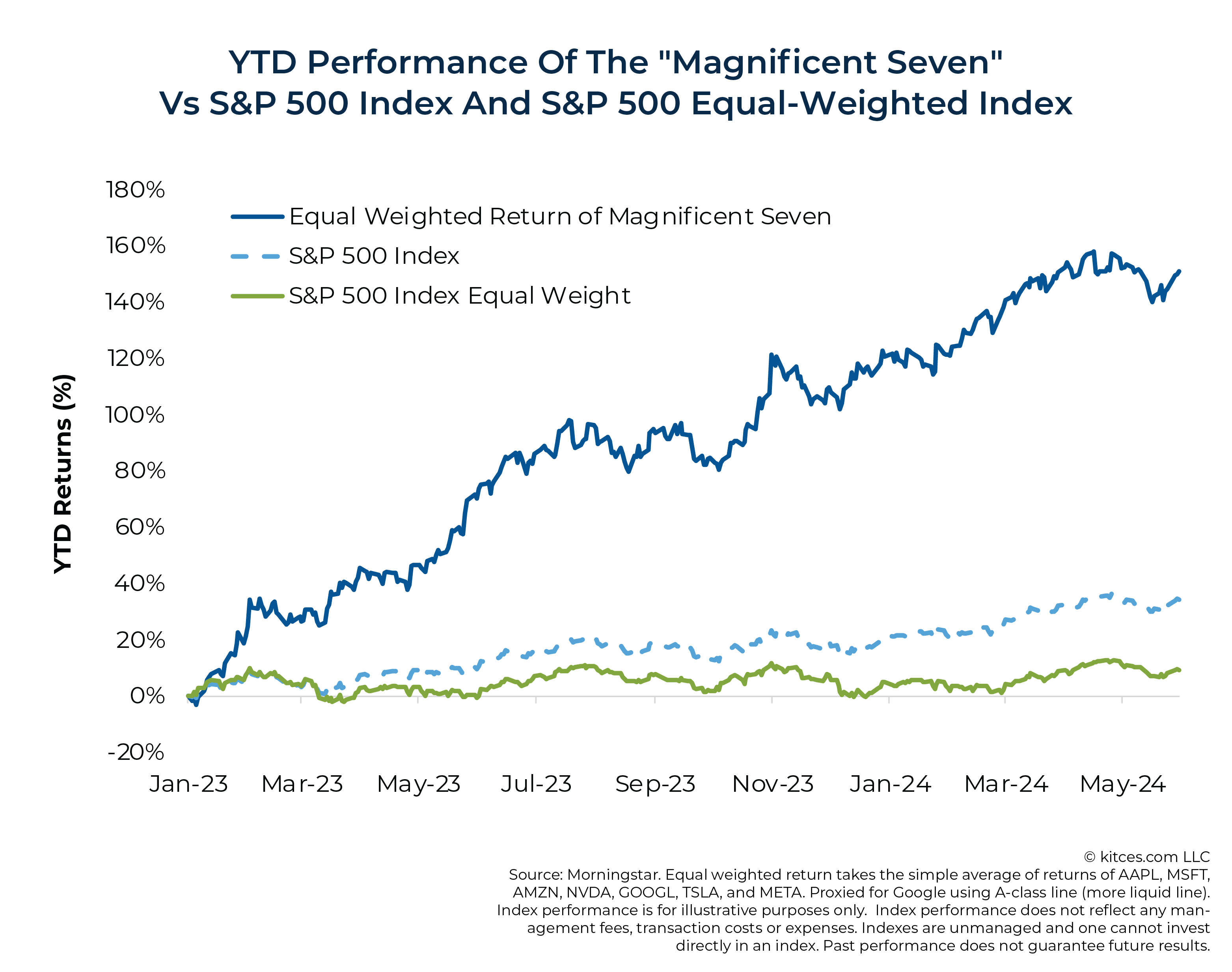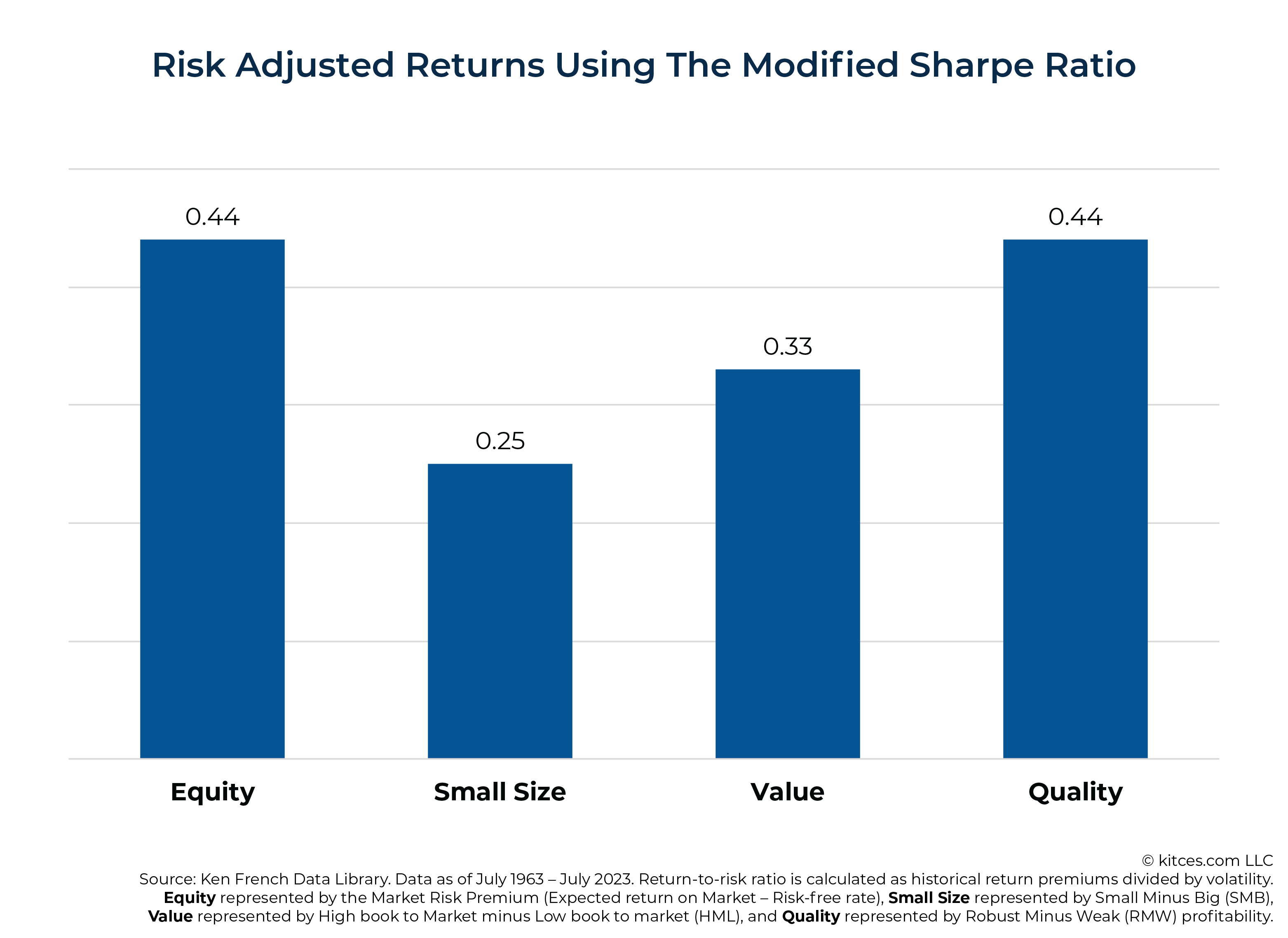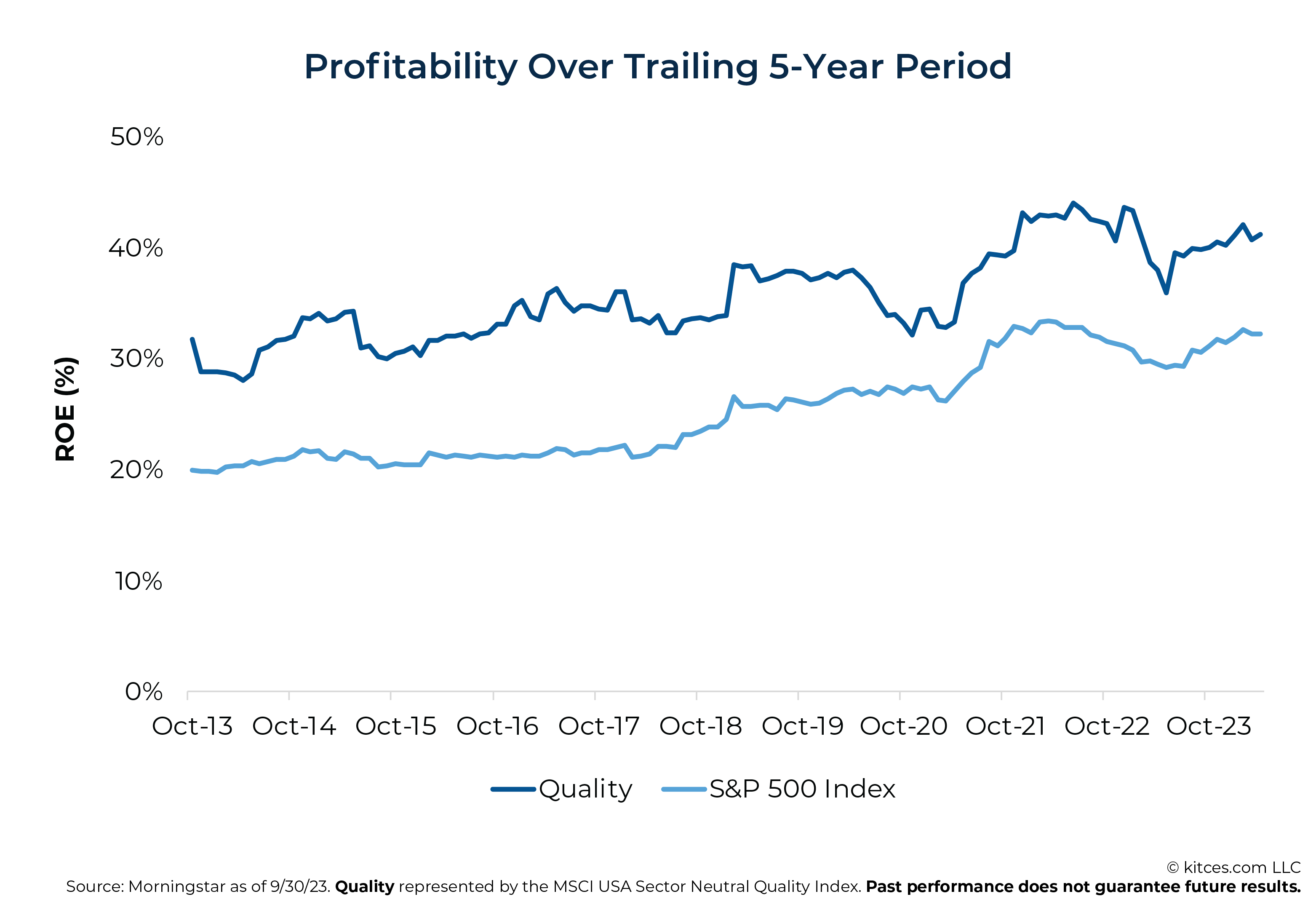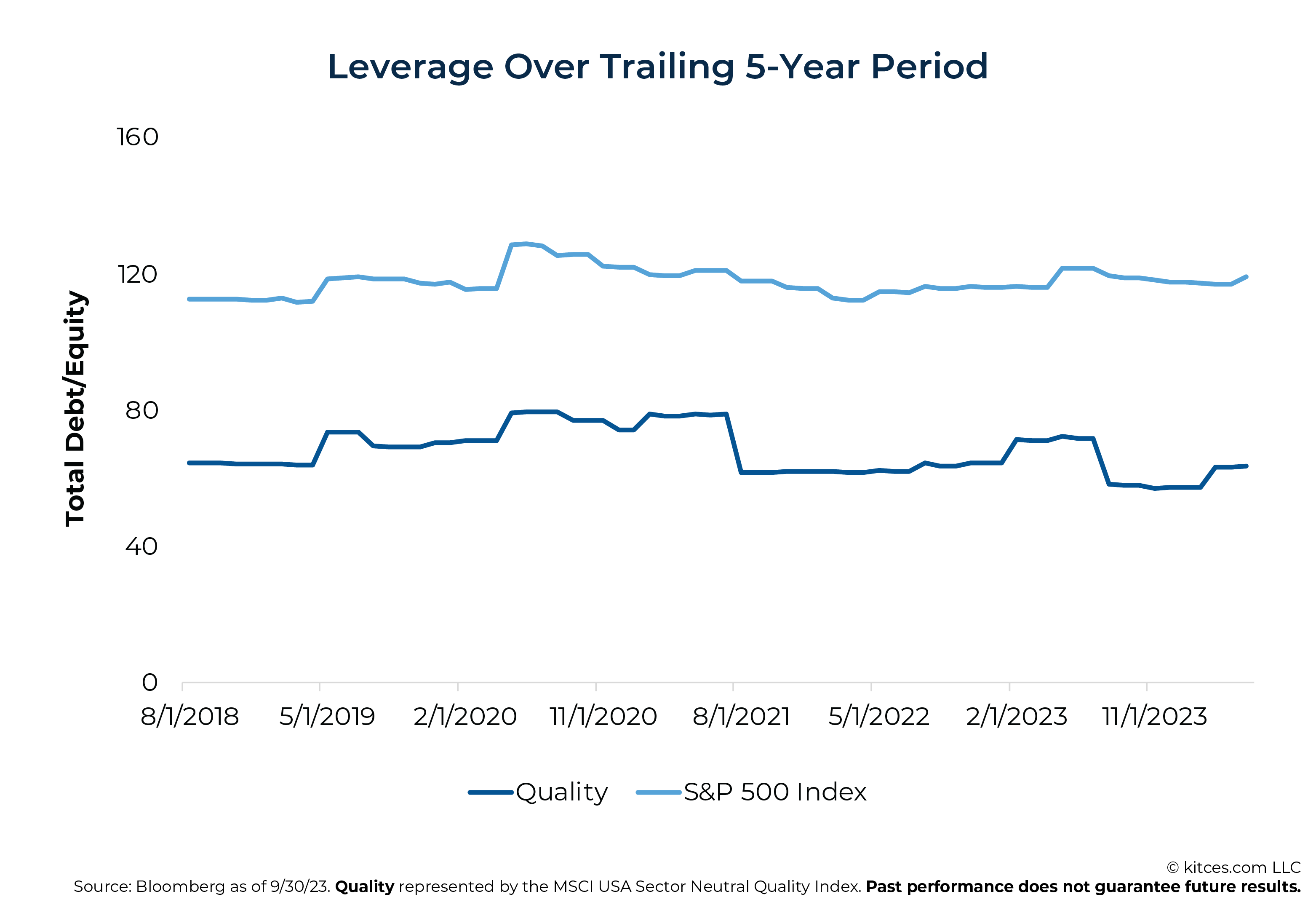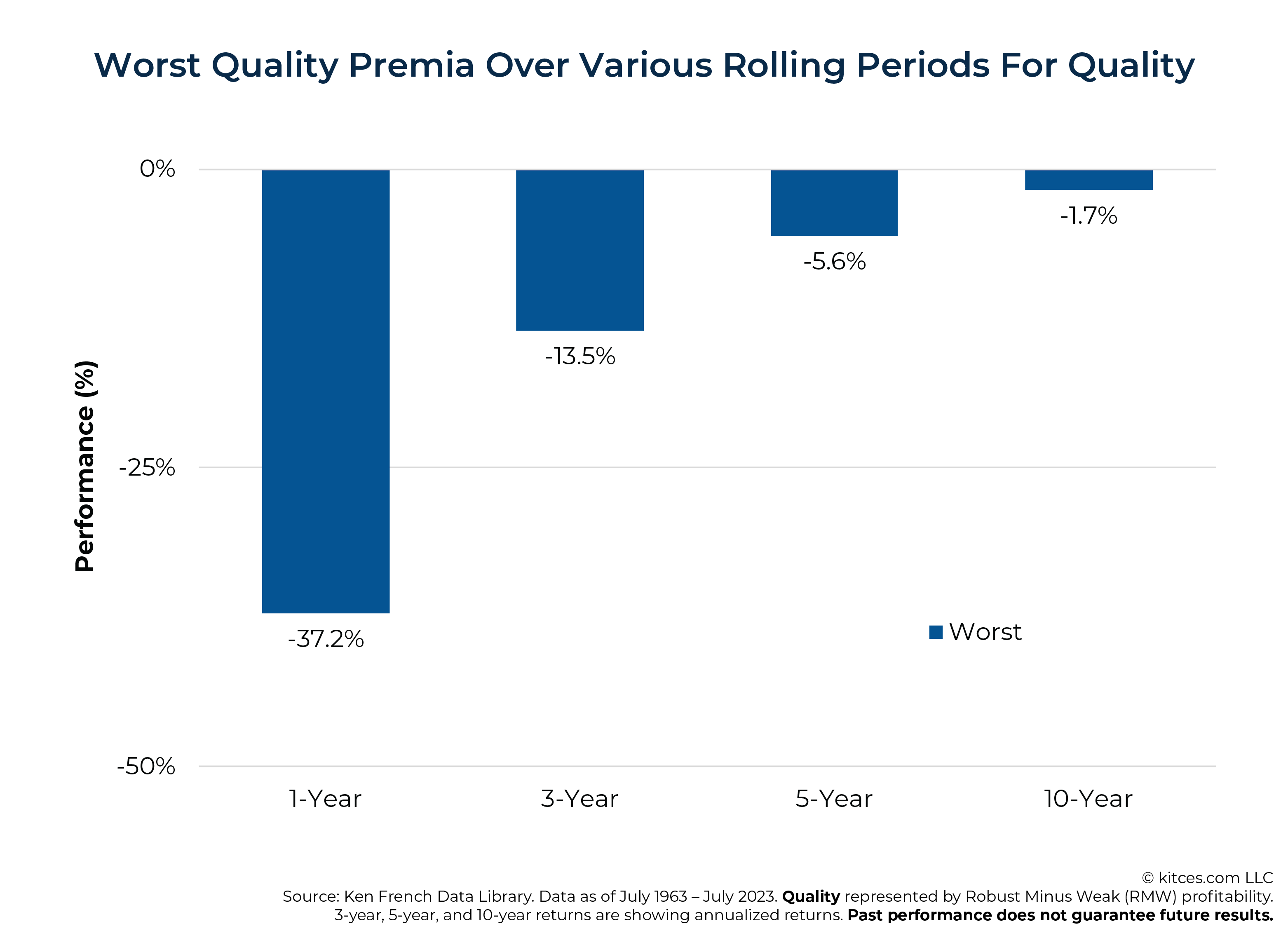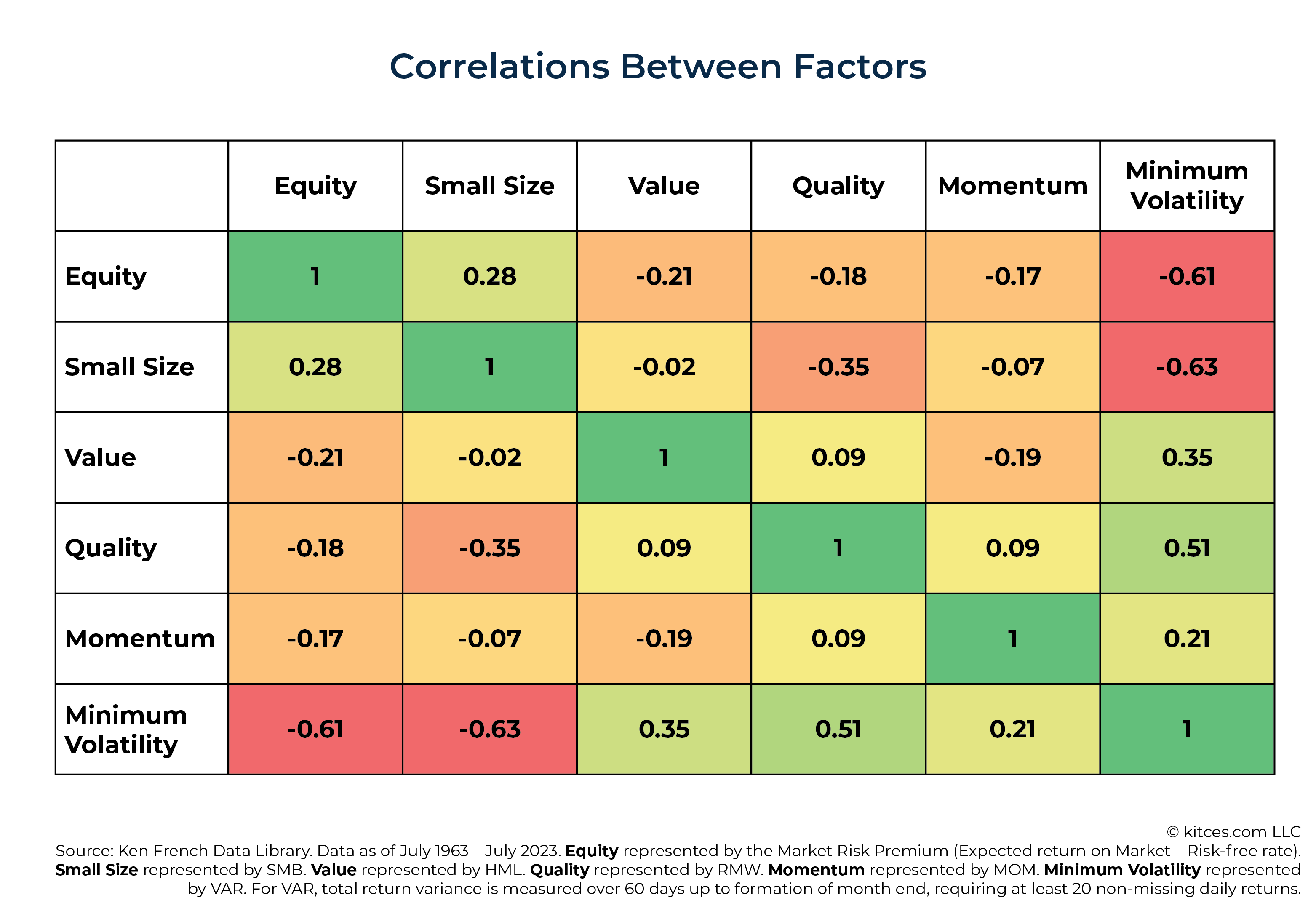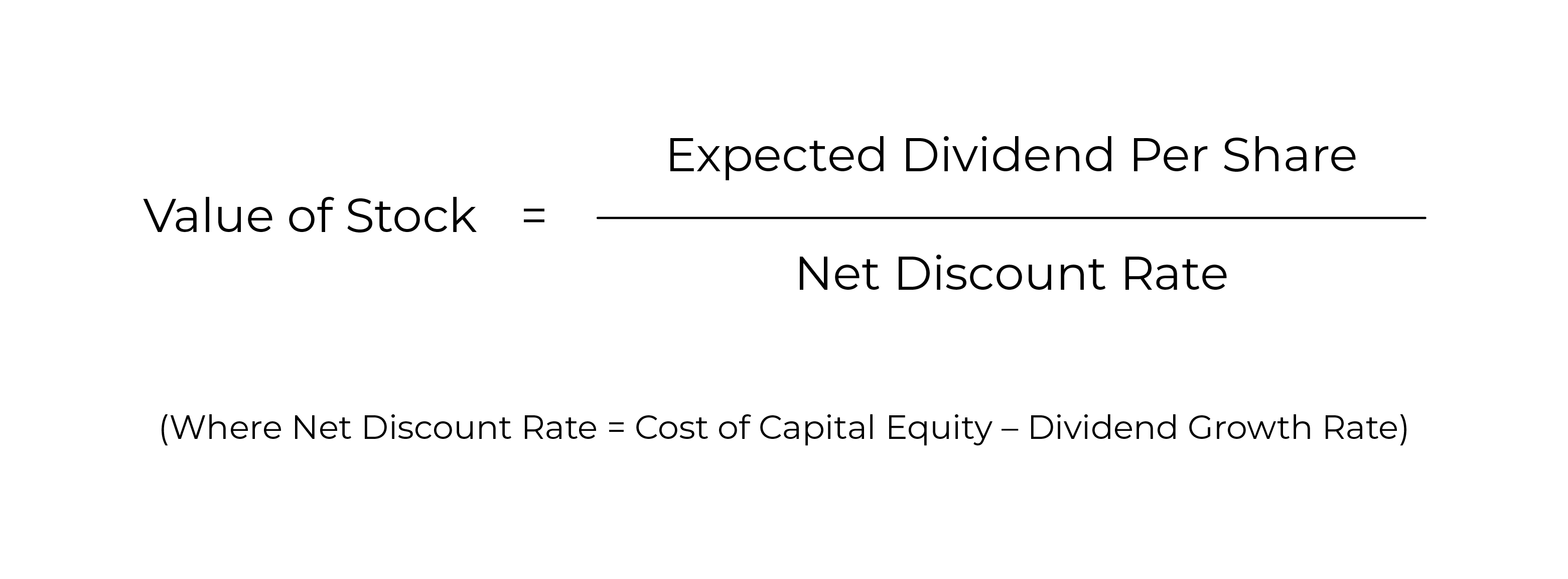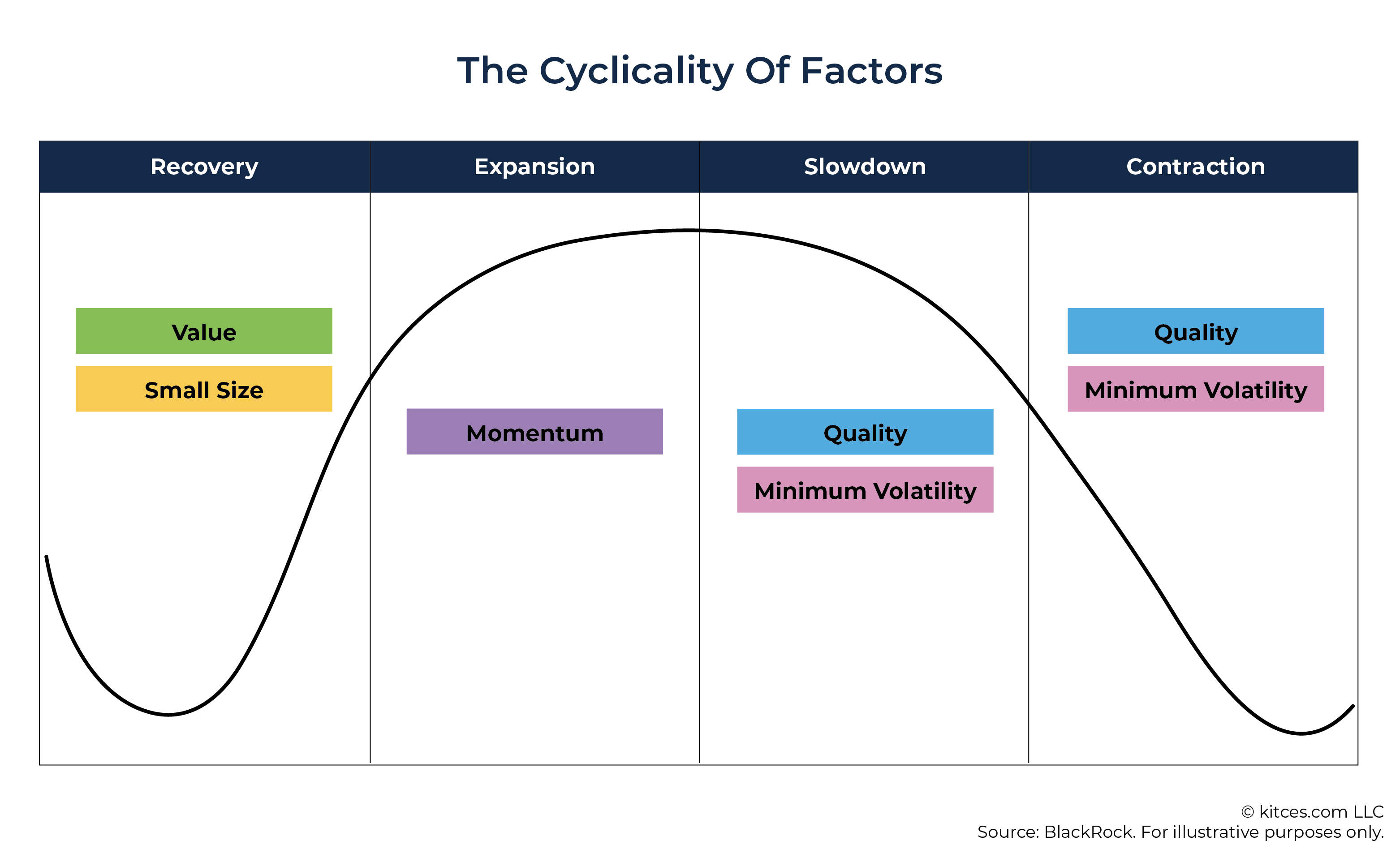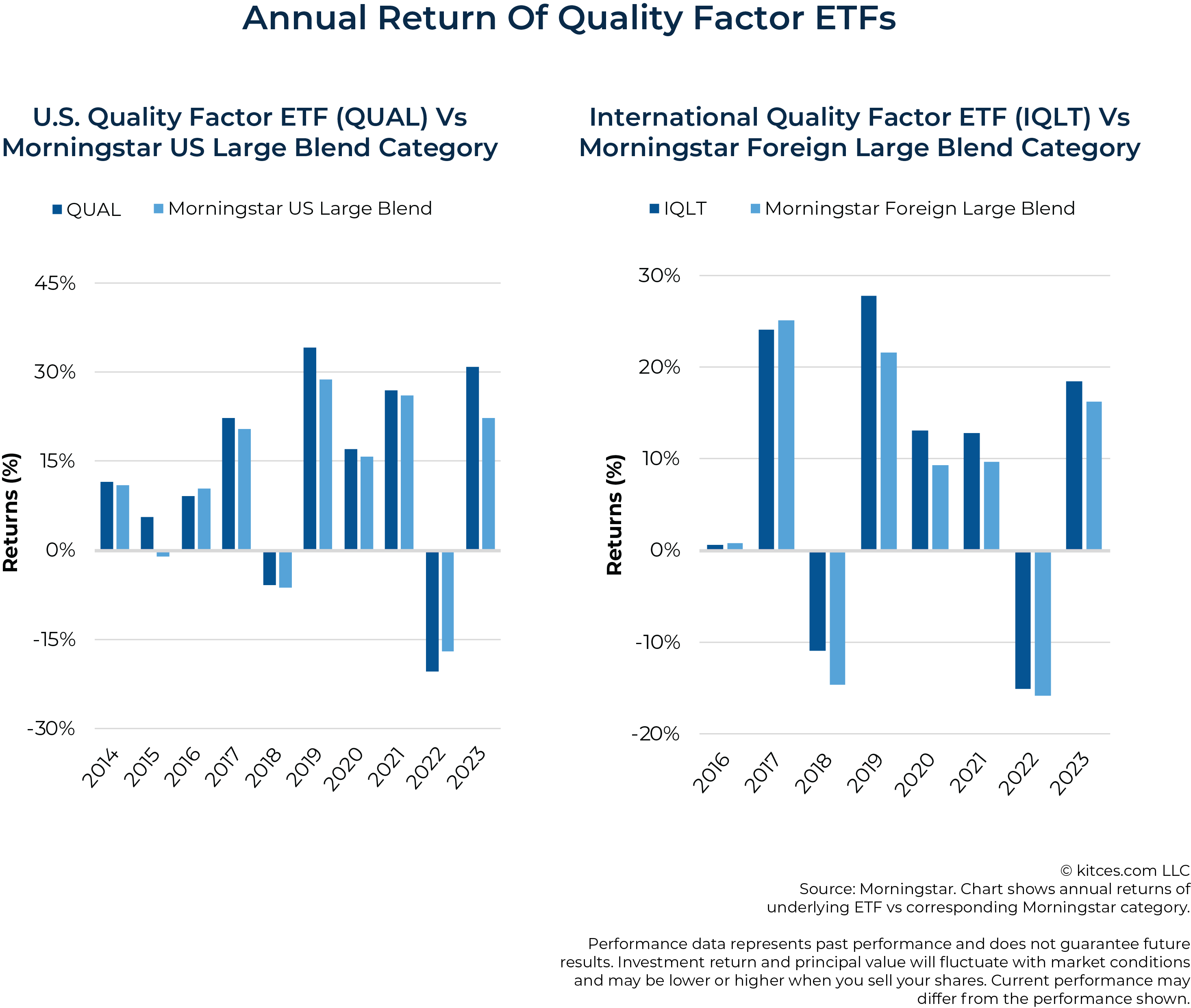Executive Summary
Over the past few decades, technological advances and plummeting transaction costs have facilitated the emergence of a dizzying variety of ways to gain exposure to very specific areas of the market. As a result, advicers have more options than ever to add value for their clients by tailoring investment portfolios that are specific to their unique needs, goals, and risk tolerance. One approach that has become increasingly popular is the use of factor-based ETFs, which are designed around certain shared characteristics of assets that go beyond the more traditional attributes (e.g., size, industry, location) of early mutual funds. While there are literally hundreds of identifiable factors, the most well-known are Quality, Value, Momentum, Small Size, and Minimum Volatility.
In this guest post, Robert Hum, a Managing Director and U.S. Head of Factor ETFs at Blackrock, discusses why Quality factor ETFs have seen large inflows over the last year, the characteristics that define Quality, and how advicers can implement Quality ETFs in their clients' portfolios.
As we head towards the second half of 2024, investors continue to grapple with many of the same issues that have influenced the overall market action for the past several quarters. While inflationary pressures have continued to trend lower and the jobs market seems to have tightened somewhat, the Federal Reserve remains in a wait-and-see mode in regard to any potential rate cuts, international tensions remain elevated, and the level of concentration in a handful of (arguably overvalued) stocks persists.
As a result, this macroeconomic and market uncertainty has ostensibly driven a preference for overweighting higher-quality companies in investment portfolios. Specifically, 'high-quality' companies share several similar fundamental characteristics. For instance, research has shown that companies whose revenue is driven by their core business functions (versus temporary accounting transactions) tend to have more sustainable earnings and higher future stock returns. Leverage also comes into play, as firms with lower debt-to-equity ratios are less risky, particularly in high-interest-rate climates. Moreover, companies that are more profitable (as measured by their return on equity) tend to outperform their less-profitable peers, even after accounting for the higher price multiples they often carry… and that relative outperformance has tended to increase with longer holding periods!
With those factors (no pun intended!) in mind, there are 3 primary ways that advicers can use Quality ETFs in portfolios. First is from a tactical perspective, where quality strategies that focus on companies with lower debt-to-equity ratios have lower total interest expenses and may be better positioned to weather the current higher-for-longer rate regime. Second, advicers can use Quality ETFs strategically. Quality ETFs tend to have a lower 'tracking error' in comparison to other factor-based products and, therefore, can be used as a large-cap blended fund. Finally, Quality ETFs can be an effective diversifier, particularly in portfolios that are tilted toward the Value factor.
Although Quality ETFs have already shown solid relative performance year-to-date, the longer-term case for Quality may still be compelling, given persistently high interest rates and the ongoing macroeconomic headwinds. Advicers can add value for clients who may be concerned about a possible economic slowdown by maintaining their overall portfolio mix consistent with a strategic focus on an area that tends to show relative strength during downturns. Ultimately, by offering clients strategies to respond to changes in the economic cycle, advicers can help clients stay disciplined and focused on their long-term goals!
As of the end of May, the S&P 500 is up 11.30% year to date. But it doesn't feel like a bull market, and 2024 has been challenging for many active managers and systematic strategies. Although the Fed appears to be ending, or nearing the end of, aggressive rate hikes that started in March 2022, U.S. domestic interest rates have been at their highest (with a current target range of 5.25%–5.5%) since 2007. Inflation has come down from close to 10% in June 2022 but is still higher than the low levels we saw beginning in early 2012.
Conflicts in Eastern Europe and the Middle East have the potential to cascade globally. Unemployment rates reached a low of 3.4% in April 2022 but have been increasing – with the rate at 4.0% as of May 2024. Wages are still elevated, but wage increases are slowing down. Consumption and industrial production are starting to waver.
We are also witnessing highly concentrated markets with 7 companies known as the "Magnificent 7" – Apple, Microsoft, Amazon, Nvidia, Google, Tesla, and Meta – that make up over a fourth of the S&P 500 Index.
The level of concentration in markets is at its highest level in more than 100 years. The gains from the so-called Magnificent 7, with AI-related optimism, have pushed U.S. equities upwards – even in the face of the macro uncertainty headwinds.

Nerd Note:
In the late 1800s, railroads dominated markets, with the railroad industry making up more than 60% of the U.S. stock market. It is no coincidence that the first stock market index –the Dow Jones Railroad Average, a precursor to the well-known Dow Jones Industrial Average – was first formed in 1882 by Charles H. Dow, consisting of railroad stocks or transportation companies intimately tied to the railroad industry.
In this environment – with increased macro uncertainty and potentially risky, concentrated markets – it is not surprising that many investors have shown a strong preference for higher-quality companies. BlackRock has seen almost $13 billion in flows into U.S. and international Quality ETFs over the last year (take, for example, iShares MSCI USA Quality Factor ETF QUAL and iShares MSCI International Quality Factor ETF IQLT). But what is Quality investing, and why are investors leaning into Quality investing today?
Quality Investing
Factors are broad, persistent sources of returns that can potentially help improve the expected returns of a portfolio, reduce risk, and add diversification. While there are 5 well-known style factors backed by empirical data and peer-reviewed academic research (Quality, Value, Momentum, Small Size, and Minimum Volatility), Quality, as discussed in more depth below, is the one factor that most investors (even those who don't explicitly target factors) understand intuitively.
Because who doesn't want to invest in companies with strong profitability, lower leverage, and capital efficiency? As prudent investors, we feel it's important to move past the intuition, gain an understanding of the economic rationale behind the historical outperformance of quality stocks, and recognize some of the reasons that we can expect such performance to persist into the future.
Academics and investment practitioners have reasoned that companies with higher quality earnings have outperformed due to investors' behavioral biases as well as their tastes and preferences for risk. 2 of the most influential papers on quality were written by Richard Sloan ("Do Stock Prices Fully Reflect Information in Accruals and Cash Flows About Future Earnings?" published in the Accounting Review in 1996) and Robert Novy-Marx ("The Other Side of Value: The Gross Profitability Premium" published in Journal of Financial Economics in 2013).
Sloan's research established the importance of assessing company fundamentals when screening for quality, with his finding that companies with high accruals – accounting transactions that are more temporary and less related to company fundamentals and operations – had lower future stock returns, making the argument that companies with more of their revenue driven by their core business functions relative to peers are primed to have more sustainable, quality earnings. In practice, companies with a higher accrual amount as a percentage of earnings may seem to be more optimistically positioned than they actually are.
Furthermore, Sloan's work also supported the importance of earnings stability in Quality factor investments; he developed the idea of "earnings fixation", where investors focus only on headline earnings – such as whether a company 'beats' earnings expectations – rather than focusing on the makeup of the different components of the earnings underneath or on how stable these earnings have been over time. This results in investors overpaying for companies with more volatile earnings, which can beat earnings forecasts. Quality investing homes in on specific sources of company earnings that have historically proven to be more resilient.
Novy-Marx's research established high profitability as a benchmark for Quality factor investments, with his finding that higher-profitability firms had higher stock returns than their less profitable peers, even after accounting for the higher price multiples they traded at.
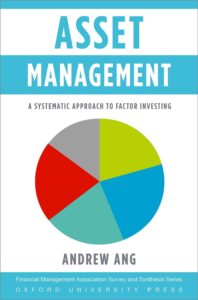 As Andrew Ang points out in his book, "Asset Management: A Systematic Approach To Factor Investing", all style factor premiums are due to a reward for bearing risk, behavioral biases, or structural impediments, but the main driver of the Quality premium is investor behavioral bias.
As Andrew Ang points out in his book, "Asset Management: A Systematic Approach To Factor Investing", all style factor premiums are due to a reward for bearing risk, behavioral biases, or structural impediments, but the main driver of the Quality premium is investor behavioral bias.
What Does The Data Look Like?
Looking at data from the Ken French Data Library going back to 1963, the annual premium for the Quality factor is represented by Robust Minus Weak (RMW) profitability and has been approximately 3.4% as of July 2023. Additionally, the persistent outperformance by Quality investments relative to their lower-quality peers has increased with longer holding periods.
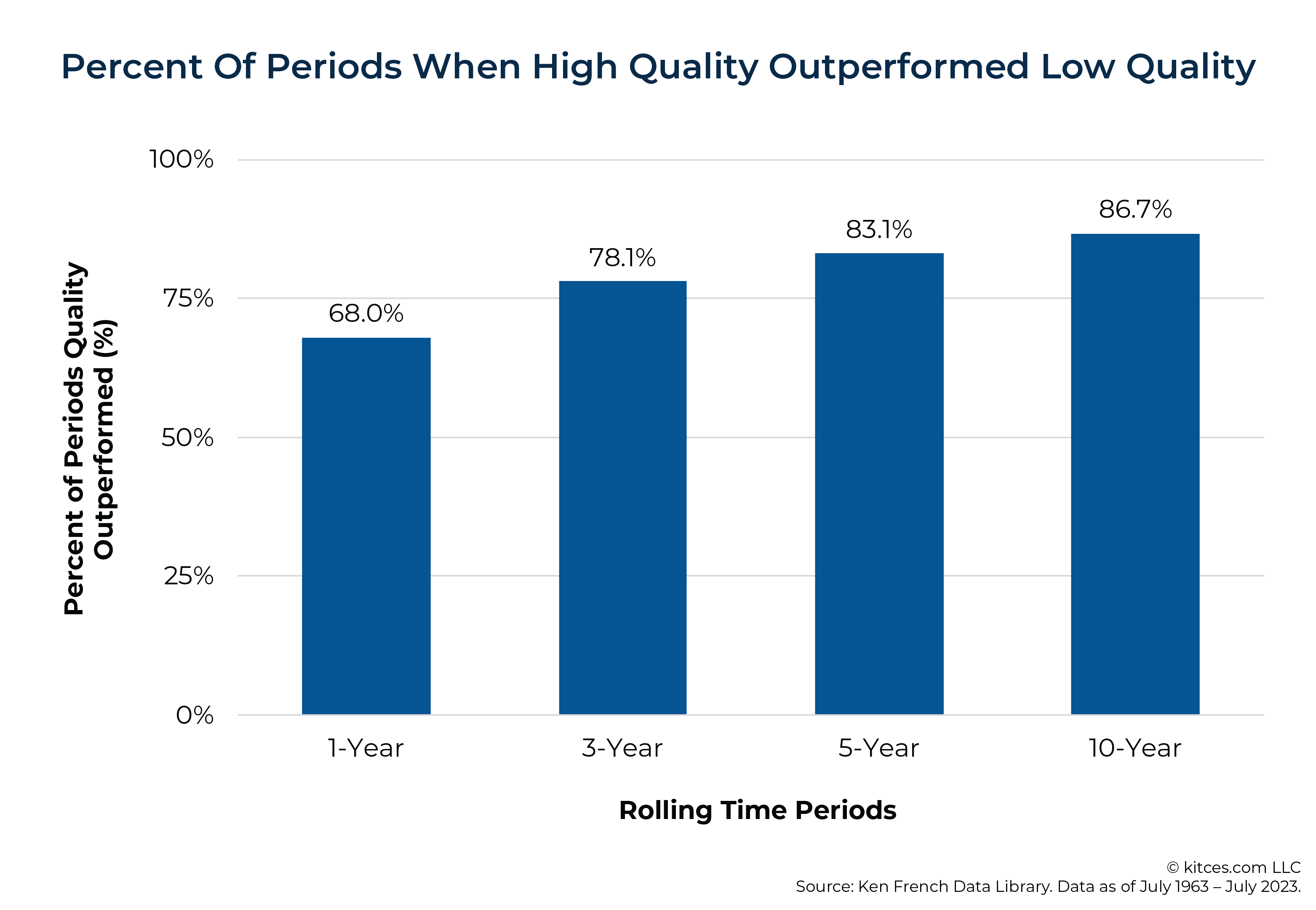 Quality's historical premium is higher than the premium found for the Small-Size factor, represented by Small Minus Big (SMB), and is in line with the historical premium for the Value factor, represented by HML (High BTM Minus Low BTM). While all 5 factors (Quality, Small Size, Value, Momentum, and Minimum Volatility) have shown positive historical premiums, they can differ in terms of expected risk and return. It's also worth noting that Quality has historically been less volatile than both Small Size and Value.
Quality's historical premium is higher than the premium found for the Small-Size factor, represented by Small Minus Big (SMB), and is in line with the historical premium for the Value factor, represented by HML (High BTM Minus Low BTM). While all 5 factors (Quality, Small Size, Value, Momentum, and Minimum Volatility) have shown positive historical premiums, they can differ in terms of expected risk and return. It's also worth noting that Quality has historically been less volatile than both Small Size and Value.
Capturing Quality
The Quality factor – more than any other style factor – tends to have multiple definitions. While many investors would agree that a Value investor is looking for undervalued securities and a Momentum investor is looking to buy upward-trending assets, what defines Quality can be more subjective.
To assess the Quality factor, it can be useful to consider it through multiple lenses. Just as it makes sense to diversify our portfolios, it may also be sensible to diversify the metrics used to capture the targeted Quality factor. In fact, we would be worried to see a return pattern associated with only 1 particular definition – instead, we want the general intuitive concept of quality to be reflected across multiple metrics.
While profitability is an important dimension of Quality, as found by Novy-Marx (2013), Quality is more than just profitability. A company that is highly profitable but has large amounts of debt is in a different position than a highly profitable company with low leverage in today's higher-rate environment.
In a similar light, a company that is highly profitable – but with profits that vary greatly each year – may not necessarily be a high-quality company if we were to enter a recession and its margins were to come under pressure.
How Do We Define Quality?
At BlackRock, we proxy for quality in our Quality ETFs using a multiple-metric approach that targets companies with higher profitability, lower leverage, and consistent earnings growth.
Quality Metric #1: Profitability Through Return On Equity (ROE)
As Novy-Marx highlighted in his research paper, a company's ability to generate profits is an important characteristic that indicates higher quality. Thus, to proxy for profitability, we consider Return On Equity (ROE). As shown below, by using ROE as a proxy, the Quality factor has historically achieved higher returns than the S&P 500 index.
Quality Metric #2: Leverage
Leverage is another attribute linked to Quality. In particular, companies with lower leverage may have lower financial risk – especially in a higher interest-rate environment. Similar to the previous metric of profitability, the chart below shows Quality's relative debt-to-equity ratio compared to the S&P 500 Index. The Quality ETF has consistently had a lower leverage exposure as proxied by debt to equity.
Quality Metric #3: Earnings Growth
Lastly, earnings variability is another metric used to assess Quality and can help identify firms that are able to generate consistent earnings growth over time. A company with more stable earnings may be considered higher quality and less risky.
ETFs that seek to track systematic, rules-based indexes that are thoughtfully constructed may allow investors to increase their exposure to the Quality factor at a low cost. Accordingly, our U.S. Quality product, iShares MSCI USA Quality Factor ETF (QUAL), and international developed Quality product, iShares MSCI International Quality Factor ETF (IQLT), both seek to track underlying indexes that have consistently had stronger exposure to companies with higher ROE, stable earnings, and lower exposure to more heavily indebted companies.
How To Use Quality In A Portfolio?
Quality ETFs can be used in portfolios in multiple ways. There are 3 primary ways to do so:
- Tactically – To gain access to higher profitability and lower leverage (2 of the 3 metrics, as discussed earlier, that define the Quality factor) in today's higher-for-longer environment;
- Strategically – To incorporate as a long-term holding with the potential to provide higher expected returns or build resilience through earnings stability (the 3rd metric used to define Quality); or
- To Diversify – To add Quality to increase diversification of other factor tilts in a portfolio.
The Tactical Case
Banks today are facing challenges from the higher-for-longer rate environment. Some of the biggest U.S. banks are facing the worst write-offs since the start of the pandemic as more borrowers struggle to pay off debt at higher interest rates. Quality strategies that consider the effects of higher leverage and focus on companies with lower leverage may be better positioned in a higher rate environment, as companies with lower leverage have lower interest payments and are less subject to the effects of interest rates that are higher for longer.
Additionally, the slowing growth environment and 'cautiously optimistic' investor sentiment may also be supportive of Quality factor investments. Quality investing may help investors keep their conviction in equities should markets become choppy.
The Strategic Case
Investors may also want to consider Quality as a long-term holding in a strategic asset allocation. Thoughtfully constructed Quality strategies – both U.S. and international – can have relatively low tracking error relative to Value and growth-focused investments.
Investors can use a sector-constrained Quality strategy as a large-cap blend fund over time given its relatively low tracking error. By adding Quality exposure as part of a strategic core allocation, investors can also increase the expected return on their portfolios (see "What Does The Data Look Like" section above).
Additionally, the longer the holding period, the better the downside resiliency has been when looking at the worst rolling periods for the factor.
Which suggests that investors who strategically hold Quality exposure over time may be able to significantly reduce the probability of negative returns over the holding period, as the above exhibit highlights.
Diversifying
Investors that follow a factor-based investment philosophy may also benefit from adding Quality exposure. In particular, investors who have Value tilts in their portfolio – and especially Small Value tilts – may benefit from adding in Quality exposures. As the graphic below shows, Value and Small Size tend to have low/negative correlations to the Quality factor.
How The Dividend Discount Model Explains Diversification With Quality Factors
The intuition for why Quality tends to have low correlations with Value is in the dividend discount model, which uses the formula below to estimate the value of a stock based on its cost of capital equity and dividend growth rate.
Value companies have high discount rates, which appear in the denominator of the dividend discount model. On the other hand, Quality companies have high quality earnings or cashflows, impacting the numerator in the dividend discount model. Thus, the higher the discount rate of a Value company, the lower its stock valuation, and the higher the expected earnings of a Quality company, the greater its stock valuation. Which is why Quality is highly diversifying to Value strategies.
Understanding The Business Cycle Impact On Different Factors To Enhance Diversification
Different parts of the business cycle can favor different factors. Pro-cyclical factors – like Value and Small Size – tend to do best coming out of an economic recovery. Companies represented by these factors tend to have economies of scale and can quickly ramp up production when coming out of a recession.
As trends start to form in the market and markets enter an expansionary period, Momentum tends to be the best-performing factor. And, not surprisingly, as we enter an economic slowdown or contraction, more defensive factors – such as Minimum Volatility and Quality – tend to hold up best. During economic downturns, investors tend to move assets into investments that have been historically more stable. Factors can be used as a way to express a view on the future of the market.
Knowing how factors could perform alongside different parts of the business cycle is useful for 3 reasons:
- Factors can be used to express a view on the future of the market;
- Owning all factors at once can help diversify the risk in predicting where we are in the business cycle; and
- A portfolio with exposure to only 1 or 2 factors would be able to tap into the missing factors to potentially dampen performance cyclicality.
Quality investors in the U.S. have been rewarded with excess performance over the market so far in 2024. While there is still a case for Quality today given a 'higher for longer' rate environment and a general slowing of the economy, a longer-term case for strategically holding Quality may actually be even more compelling. All factors will go through periods of underperformance.
The chart below shows the performance of the iShares MSCI USA Quality Factor ETF versus the average return of its respective Morningstar Category, which is based on the characteristics of the underlying holdings of the U.S. Fund Large Blend. As noted earlier, in the short term, there are periods when each factor will over/underperform the market. As seen in the graphic below, both U.S. and International Quality ETFs have demonstrated more calendar years of outperformance than underperformance. This underscores the tendency of Quality ETFs to outperform their peers in the same category while being a more efficient allocation by overall cost.
The key point is that the Quality factor works both tactically and strategically. It has historically outperformed in defensive environments and also has proven its ability to outperform as a strategic holding in a portfolio. The iShares range of Quality factor ETFs (QUAL and IQLT) provides a robust definition of quality investing by taking profitability, leverage, and earnings stability into account. All 3 are crucial for quality to work over all types of market environments, and Quality ETFs have proven their ability to outperform over time against their peers.
Ultimately, incorporating Quality into a portfolio helps diversify and reduce the cyclicality of returns; however, the right application is important. Quality Factor ETFs with a sector-neutral approach allow for existing sector bets in the portfolio to remain consistent in the portfolio. Which means that advicers can use Quality factor investments as a way to add value for clients by maintaining an overall portfolio mix consistent with a strategic focus on an area that tends to show relative strength during downturns. Ultimately, by offering clients strategies to respond to changes in the economic cycle, advicers can help clients stay disciplined and focused on their long-term goals!
For investors interested in learning more about factors, Blackrock will be releasing an upcoming piece on building factor portfolios and the insights gathered from analyzing thousands of advisor portfolios. Many investors, even those who do not currently consider themselves factor investors, may have unintended tilts to a subset of factors. Understanding their portfolio from a factor lens may allow investors to better understand what's driving their portfolio's risk and return profile.
There can be no assurance that performance will be enhanced or risk will be reduced for funds that seek to provide exposure to certain quantitative investment characteristics ("factors"). Exposure to such investment factors may detract from performance in some market environments, perhaps for extended periods. In such circumstances, a fund may seek to maintain exposure to the targeted investment factors and not adjust to target different factors, which could result in losses.
DISCLOSURE:
Carefully consider the Funds' investment objectives, risk factors, and charges and expenses before investing. This and other information can be found in the Funds' prospectuses or, if available, the summary prospectuses, which may be obtained by visiting the iShares Fund and BlackRock Fund prospectus pages. Read the prospectus carefully before investing.
Investing involves risk, including possible loss of principal.
International investing involves risks, including risks related to foreign currency, limited liquidity, less government regulation and the possibility of substantial volatility due to adverse political, economic or other developments. These risks often are heightened for investments in emerging/ developing markets or in concentrations of single countries.
Fixed income risks include interest rate and credit risk. Typically, when interest rates rise, there is a corresponding decline in the value of debt securities. Credit risk refers to the possibility that the debt issuer will not be able to make principal and interest payments.
This material represents an assessment of the market environment as of the date indicated; is subject to change; and is not intended to be a forecast of future events or a guarantee of future results. This information should not be relied upon by the reader as research or investment advice regarding the funds or any issuer or security in particular.
Buying and selling shares of ETFs may result in brokerage commissions.
The strategies discussed are strictly for illustrative and educational purposes and are not a recommendation, offer, or solicitation to buy or sell any securities or to adopt any investment strategy. There is no guarantee that any strategies discussed will be effective.
The information presented does not take into consideration commissions, tax implications, or other transaction costs, which may significantly affect the economic consequences of a given strategy or investment decision.
Diversification and asset allocation may not protect against market risk or loss of principal.
There can be no assurance that performance will be enhanced or risk will be reduced for funds that seek to provide exposure to certain quantitative investment characteristics ("factors"). Exposure to such investment factors may detract from performance in some market environments, perhaps for extended periods. In such circumstances, a fund may seek to maintain exposure to the targeted investment factors and not adjust to target different factors, which could result in losses.
The iShares Minimum Volatility Funds may experience more than minimum volatility as there is no guarantee that the underlying index's strategy of seeking to lower volatility will be successful.
Sharpe ratio is a measure of the indexes return per unit of risk. It is calculated by subtracting the risk-free rate from the indexes total return and dividing the result by the indexes standard deviation. A higher Sharpe Ratio implies greater efficiency.
Commodities' prices may be highly volatile. Prices may be affected by various economic, financial, social and political factors, which may be unpredictable and may have a significant impact on the prices of commodities.
This material contains general information only and does not take into account an individual's financial circumstances. This information should not be relied upon as a primary basis for an investment decision. Rather, an assessment should be made as to whether the information is appropriate in individual circumstances, and consideration should be given to talking to a financial professional before making an investment decision.
The information provided is not intended to be tax advice. Investors should be urged to consult their tax professionals or financial professionals for more information regarding their specific tax situations.
Neither BlackRock nor iShares is affiliated with Kitces.com.
The Funds are distributed by BlackRock Investments, LLC (together with its affiliates, "BlackRock").
©2024 BlackRock, Inc. or its affiliates. All Rights Reserved. ALADDIN, BLACKROCK, and iSHARES are trademarks of BlackRock, Inc. or its affiliates. All other trademarks are those of their respective owners.


